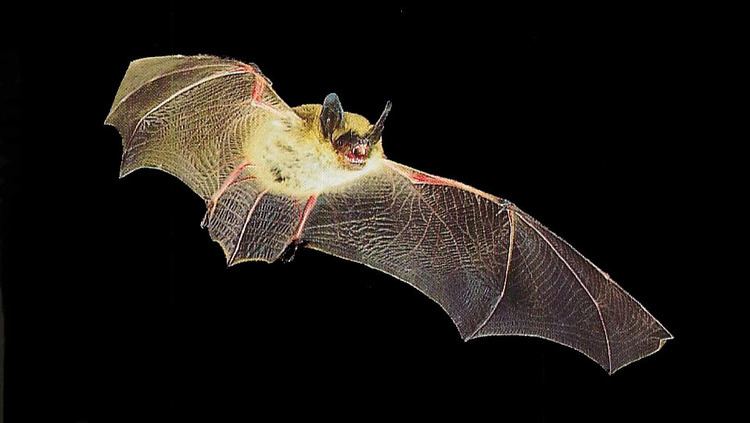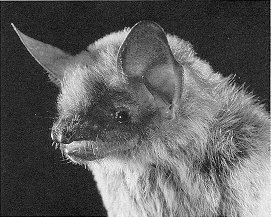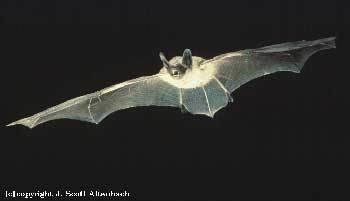Order Chiroptera Genus Myotis Higher classification Mouse-eared bat | Phylum Chordata Family Vespertilionidae Scientific name Myotis thysanodes Rank Species | |
Similar California myotis, Mouse‑eared bat, Long‑eared myotis, Yuma myotis, Long‑legged myotis | ||
The fringed myotis (Myotis thysanodes) is a species of vesper bat that is found in British Columbia in Canada, Mexico, and the western United States.
Contents

Description

The fringed myotis (Myotis thysanodes) has the shortest ears of the long-eared myotis group. The Fringed Myotis gets its name from the distinct fringe of short, wire-like hairs found on the membrane between its hind legs. With a lifespan that can reach upwards of 18 years, this species has an average total body length of roughly 85mm and an average weight of 8.8 grams. Ear length is about 16.5mm and they project roughly 5mm beyond its snout. Sexual dimorphism is seen in this species with males being much smaller than their female counterparts. They possess a pelage that is full and tends to be light brown on the back with an off-white colored on its underside.
Diet

The diet of the Fringed Myotis consists mainly of beetles (60 to 73%) and other flying insects, mainly moths (36-40%), which appear later in the evening. Additionally, it has been suggested that the wire-like hairs along its interfemoral membrane act to help trap the insects it catches in flight [2][4].
Range and Habitat

The Fringed Myotis resides mainly in the western United States and can be found as far north as British Columbia and as far south as Mexico [4]. It's primarily found in desert shrublands, sagebrush-grassland, and woodland habitats consisting of Douglas-fir, Oak, and Pine trees [9].
Roosting

This species has been reported to have used a wide variety of structures such as caves, mines, and buildings as day roosts during the summer months [7][8]. Unfortunately, roosting behaviors during the winter months are largely unknown [4]. While the majority of recorded day roosts have been in rock crevices, those members living in the pacific northwest can often be found roosting in tree snags [8].
Flight

With short, broad wings, this species is built to fly at low speeds but is capable of high maneuverability due to its wings having a low aspect ratio (wing length / wing width) [2]. They tend to stay close to the vegetative canopy while hunting in flight but they also possess wings with a high puncture strength [6]. This characteristic is often seen in species that forage near thorny or thick vegetation [6].
Mating and Reproduction
The majority of mating seems to occur in the autumn months with ovulation, fertilization, and implantation occurring between late-April to mid-May [3][6][10]. The gestation period will typically last from 50 to 60 days resulting in the young being born in late June to mid-July [3][6][10]. Each litter produces only one pup and in this species, it's extraordinarily large [6]. The newborn's weight can be up to 22%, and its length up to 54%, of the mother's [6]. Although not entirely precocial, the pups are able to fly just over two weeks after birth [3].
See also
